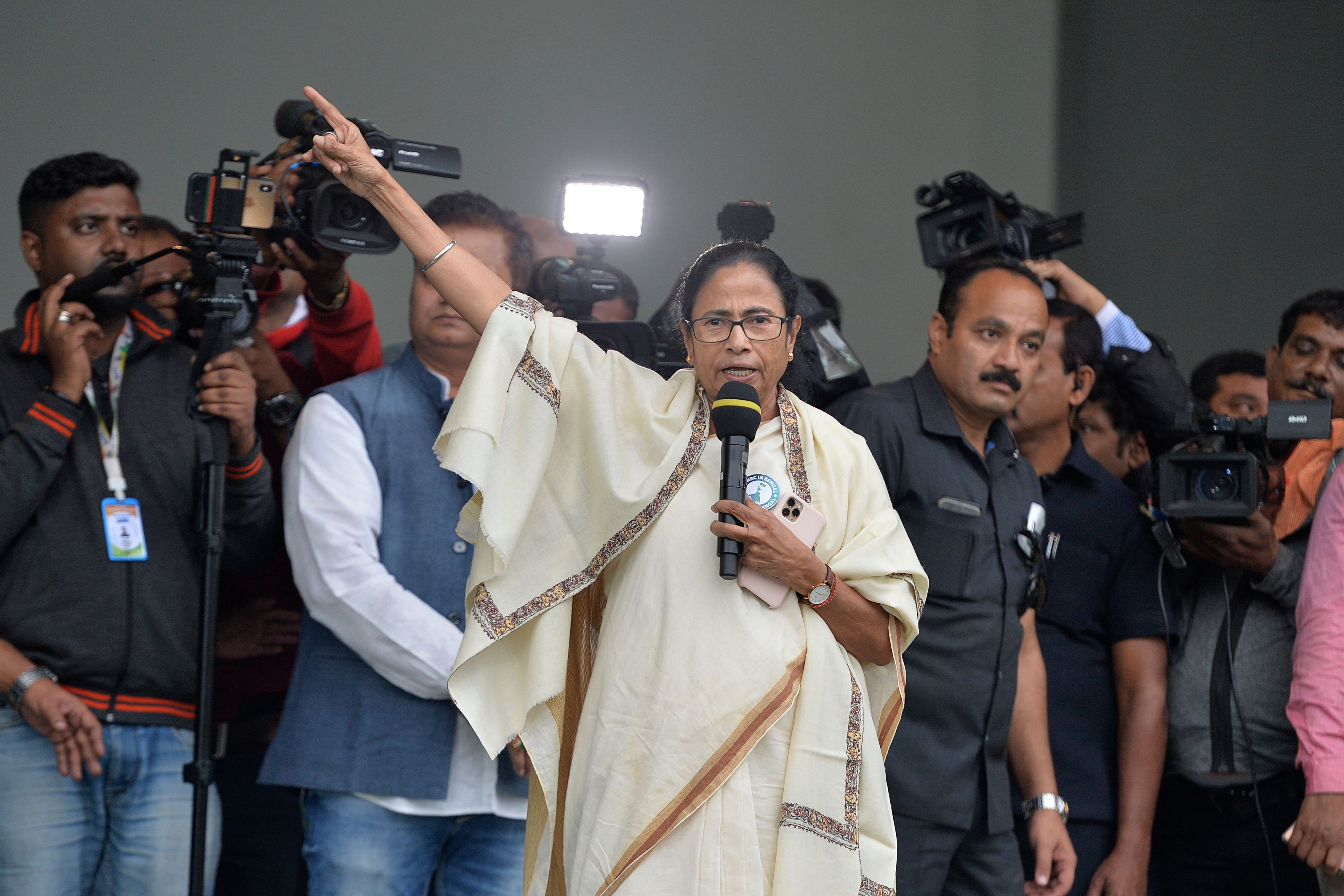
Mamata Banerjee has done the unpredictable once again. What may have appeared like a political flip more than a decade ago has now taken the character of a wise, prudent manoeuvre.
So just what has the Didi of Bengal has been up to? First, not following the lead provided by the Leftists and Congress in Kerala, she refused to bring a resolution in the Bengal Assembly against the Citizenship (Amendment) Act. Next, the Bengal chief minister decided to boycott a meeting of Opposition parties, convened at her instance by Sonia Gandhi, blaming the Congress for playing 'dirty politics’ in the state!
Not only that, during a recent debate in the Assembly, she declared that henceforth she would fight the battle against the CAA and the National Register of Citizens (NRC) all alone. She brought up something else that rung out loud. “What the Left and the Congress are doing in the name of CAA-NRC is not a movement, but vandalism,” she held. Ironically, this is what the BJP has accused the Congress-Left of doing at the national level.
In a single fell stroke, Didi has done away with Opposition unity that she had relentlessly worked to build over the last few years. To many, it may sound like a sudden volte-face by the ever mercurial Banerjee. But to understand what infuriated the Bengal CM so much, we have to rewind a month in time.
Bengal and Assam were the first states that witnessed widespread violence in the aftermath of the smooth passage of the Citizenship (Amendment) Bill in the parliament. In Bengal, five trains were burnt, rail lines uprooted, stations torched, buses and cars set on fire in many places in the Muslim majority districts of Murshidabad and Malda, as well as in other Muslim-majority regions. It went on for three days starting on December 14. Fortunately, people were not targeted, and so the acts did not snowball into a communal clash.
The state administration had reports that not only the workers of AIMIM, the party led by Asaduddin Owaisi, but also radical fundamentalist organisations like the Popular Front of India (PFI) and the banned SIMI were involved. Mamata Banerjee appealed for calm in a video message warning people not to fall for communal provocation. The situation came under control within a few days and calm returned even in Murshidabad district, the most-affected area.
Then came January 8, the day of the nationwide strike called by the Congress and the Left through their trade union fronts. Mamata Banerjee declined to support a bandh that would harm the economy. It was in tune with the line she was following since she became CM.
Peeved by her stand, both the Congress and the Left chose the disturbed Murshidabad district to incite passion against the central and state governments. At Sujapur, in the same district, people set a police vehicle on fire, pelted stones at the police. Later videos came out showing the police retaliating by smashing the windows of cars. Meanwhile, road and rail blockades and clashes with the police were reported from many places all over Bengal.
It was in these circumstances that Mamata Banerjee accused the Congress-Left combine — ‘two dead forces’, in her words — of resorting to vandalism.
Her stance appears fraught with danger for her own party. She is being accused of 'duplicity' by state-level leaders of the Left and the Congress. They may even attempt to incite minorities against her, reminding them that she was once an ally of the BJP. Such a campaign may also help the AIMIM get a foothold in the state, and finally, cause a shift of some votes to the party. The shift will harm the Trinamool Congress the most.
Still, what Mamata has done shows she is still politically agile, and capable of fighting the BJP in Bengal the right way. She knows that the acts of arson and violence against the police have already polarised the Hindus. If the trend goes unabated, the BJP will surely emerge as the undisputed political frontrunner. So, by condemning ‘vandalism’ and distancing herself from it, she has sent three strong messages: First, she is aware of the ground reality and will not allow the situation to deteriorate further, whatever be the political consequences. Second, if the Muslims really want to fight CAA-NRC, they will have to follow her non-violent path. Finally, the Hindus must understand that she will protect them, provided they do not follow radical Hinduism.
The messages, in the short run, will spare Bengal from falling into a trap of spiraling communal violence. At the same time, it will give Trinamool Congress some space to fight the BJP back. Didi has chalked out her own strategy, and looks like the right strategy too.
(Diptendra Raychaudhuri is a Kolkata-based journalist and author of books including, A Naxal Story. He is a deputy editor at the Bengali daily, Aajkal)
Disclaimer: The views expressed above are the author’s own. They do not necessarily reflect the views of DH.